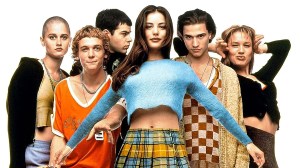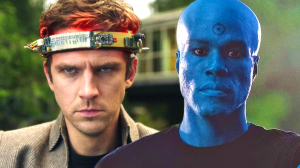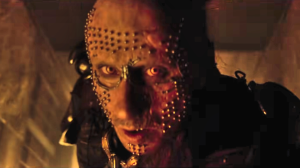Filmmaker F.W. Murnau’s Nosferatu: A Symphony of Horror is considered a masterpiece not only in horror, but also for the German Expressionist movement, even more than a century after its release. Making its place in cinematic history all the more impressive is that, shortly after its release, virtually all copies of the movie were destroyed in accordance with a court-ruled mandate that Murnau violated copyright laws. Despite Dracula author Bram Stoker’s widow Florence winning the short-term battle, it would seem that the impact of Nosferatu would win the war. Nosferatu‘s place in the annals of horror is impressive, and its legacy is expected to grow even further with the release of the upcoming Nosferatu from filmmaker Robert Eggers.
Videos by ComicBook.com
Prana Film was a film studio that aimed to deliver audiences a number of supernatural- and occult-themed stories, which tapped writer Henrik Galeen to adapt Bram Stoker’s Dracula into a screenplay. Knowing that they didn’t have the film rights, there were a handul of changes made to the story to try to skirt any copyright infringement: Count Dracula was renamed Count Orlok, the setting was changed from Britain to Germany, and Orlok killed victims as opposed to turning them into vampires, among other changes. The similarities between the two stories are so rife, however, even many audiences today believe the ghoul in Nosferatu to actually be Dracula.
Bram Stoker died in 1912 and, a decade later, Nosferatu premiered. Promotional materials for Nosferatu touted that it was an adaptation of Dracula, resulting in Florence Stoker, still reeling from the death of her husband, taking action against Prana Film. In the ensuing legal battle, Prana Film would ultimately go bankrupt and, in lieu of seeking money in the legal battle, Stoker requested that all prints of the movie be destroyed. The court ruled in her favor, and while there’s no definitive proof of how many copies were destroyed, only a limited number of prints remained, none of which were complete.
The prints that did survive, though, landed in museums and began to be restored. The current versions of Nosferatu were pieced together through an amalgam of multiple prints, with portions of the film’s score also having to be recreated. One point of contention is that some versions of the original Nosferatu are purely black and white, while others offer yellow or blue tinting in select scenes to convey daytime or nighttime. Some reports claim that the tinting of the film is meant to uphold the original version of the movie, though some of these claims are conjecture.
[RELATED – No, Nosferatu Is Not the Vampire’s Name (It’s Not Dracula Either)]
Despite Stoker’s best efforts to eradicate Nosferatu, those efforts failed. In addition to serving as a seminal piece of German Expressionism, alongside movies like The Cabinet of Dr. Caligari and The Golem: How He Came into the World, Nosferatu has also helped establish iconic elements of vampire lore. In Dracula, for example, the sunlight merely made the Count more vulnerable, while Orlok is killed in a dramatic fashion when exposed to sunlight.
Almost a decade after the release of Nosferatu, Universal Pictures purchased the rights to Stoker’s Dracula and delivered the Bela Lugosi-starring Dracula in 1931. A major success in its own right, Lugosi’s more authentic take on the character established the seductive and attractive depiction of a vampire (influencing projects like The Lost Boys, Bram Stoker’s Dracula, Interview with the Vampire, and True Blood) while Max Schreck’s Orlok established the more ghoulish and monstrous version of the vampire (influencing projects like Salem’s Lot, From Dusk Till Dawn, and 30 Days of Night).
Regardless of the legality of its origins, Nosferatu: A Symphony of Horror‘s legacy is arguably stronger now than ever, both for its own merits and for the ways it has influenced vampiric stories and the entire horror genre. Even more shocking would be to imagine a world in which Florence Stoker succeeded in erasing the film from history entirely.
Robert Eggers’s Nosferatu lands in theaters on December 25th.
What do you think of the original Nosferatu? Contact Patrick Cavanaugh directly on Twitter or on Instagram to talk all things Star Wars and horror!








